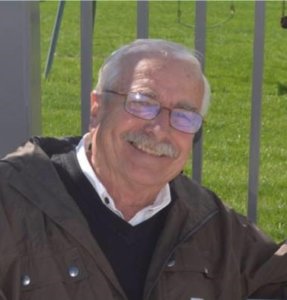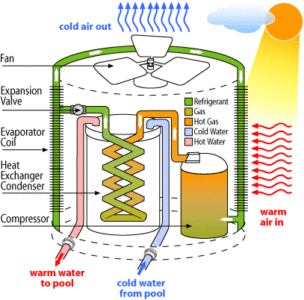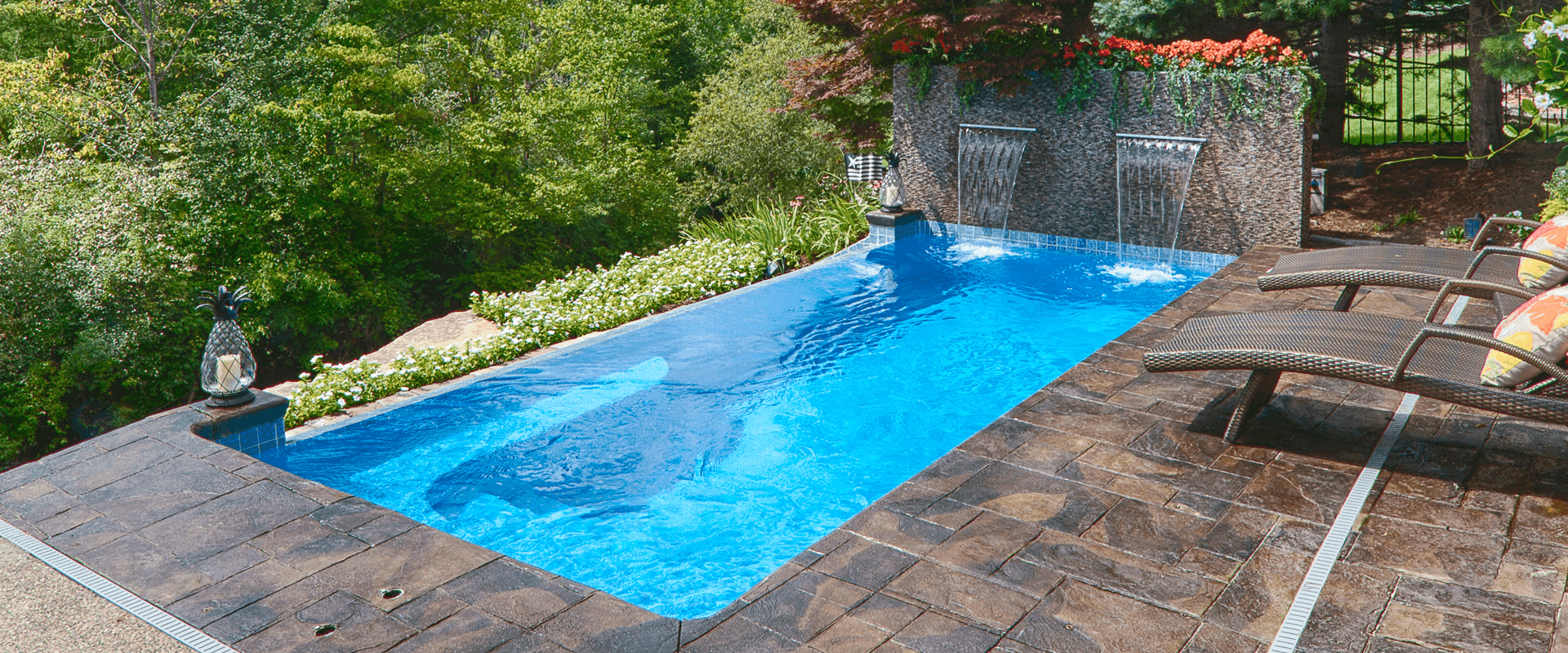877-929-7665
Ask the General: What is a Pool Heat Pump and How Does it Work?
Dear General,
I have a question about how to heat our new pool. We want to keep our pool maintenance costs as low as we can, but it’s important for us to be able to swim as much as possible during the year, so we want it to be warm! A couple of my friends with inground pools have gas heaters, but several people have told me I should consider a pool heat pump. I’m not sure how either of them work. What’s my best option?

-Chilling in Charleston
Dear Charleston,
Thanks for the great question! You’re not the only person who’s feeling a little fuzzy on this topic. Let’s first take a look at the difference between how these two types of pool heating systems work.
The difference between a pool heater and a pool heat pump
- Traditional pool heaters use either propane or natural gas to generate heat. They do so by burning the fuel inside a combustion chamber. The pool water is drawn through the heater in copper coils, which warm it. Then, that warm water is returned to the pool. You can set the thermostat to whatever temperature you desire, and the heater will bring your water up to that temp pretty quickly.
- Heat pumps (also known as electric pool heaters) are, as they say, a whole ‘nother talk show. The big difference is that they don’t actually generate heat on their own. Instead, they pull ambient heat from the air around your pool and use that heat to warm your pool water.
How does a pool heat pump work?
Next, let’s look more in depth into how heat pumps work. The following information is taken from the National Pool and Spa Institute’s technology class:
- Thermostat. First, you’ll set the thermostat on your heat pump to your desired water temperature. Then, it gets to work.
- Fan assembly. The fan assembly starts the process by pulling warm, outside air into the evaporator coil.
- Evaporator coil. Liquid refrigerant inside the evaporator coil gathers heat from the warm air and transforms it into gas.
- Compressor. The warm gas in the evaporator coil is then pulled back into the compressor, which increases the heat.
- Heat exchanger. This heated gas then passes through the heat exchanger condenser.
- Pool pump. While all this is happening, your pool pump is busy circulating your cool pool water, so it will eventually pass through your heat pump’s heat exchanger.
- The magic happens. As the heated gas and your pool water pass through the heat exchanger at the same time, the gas transfers its heat to the water. That nice, warm water flows back into your pool, the hot gas returns to liquid form and goes back to the evaporator, where the whole process starts over again.

Is it a lot of work to have a pool heat pump?
When purchasing any pool equipment, you of course want to know how much work it will be for you to maintain and if it’s safe for your family. Fortunately, all you’ll need to do to maintain your heat pump is keep the surrounding area clear, the water flow normal, and chemical levels correct. The following features of a heat pump make them essentially hassle and worry-free for pool owners:
- Pressure switch. Just like other types of heaters, heat pumps have a pressure switch that allows the heat pump to run only with the correct amount of water flow. This ensures that heat will be removed by enough water inside the heat exchanger to prevent overheating and damage to the unit.
- Low-ambient switch. This switch allows the heat pump to run only when the surrounding air temperature is high enough to prevent damage to the compressor. Wet bulb controllers allow the heat pump to run in temperatures as low as 30 degrees. However most units are factory-set to only let the unit operate at 45 degrees or higher.
- Refrigerant low-pressure switch. This control prevents compressor damage from loss of refrigerant. Since refrigerant temperature and pressure are related, this switch also backs up the low-ambient switch to prevent the unit from running too cold.
- Refrigerant high-pressure switch. This control protects the compressor from operating with too-high refrigerant pressure, which would contain too much heat. It also backs up the water pressure switch, which in turn prevents the unit from overheating.
- Built-in water bypass. Some heat pumps also have a built-in water bypass feature, which prevents too much water from entering the heat exchanger, which could cause excessive wear on the metal and shorten the life of the heat pump.
- Time delay. This control prevents the restart of the heat pump after electrical power has been interrupted. Time delays are set for 3 to 10 minutes. The time delay is necessary for the refrigerant pressure to equalize from high side to low side.
Is a pool heat pump the right choice for you?
It depends. Obviously, if the ambient air isn’t warm (at least 50 degrees,) there’s no heat source for your heat pump, and your pool water won’t warm up. Since you live in Charleston, where it’s typically pretty warm year ‘round, it’s probably a good choice for you, and will help you reduce your pool operating costs. Folks who live in cooler climates are probably better off with a traditional gas-powered heater.
Tips to keep the most from your pool heating system
- Set it and forget it. If you want to reduce your pool operating costs, it’s better to maintain the water temperature at or near your desired temperature, regardless of what kind of pool heating system you have. Find your desired temperature and leave the thermostat alone. If you turn it off, and the night gets cool, it can take several days to get your water back to the temperature you want.
- Get an automatic pool cover. I’ve written articles about automatic pool covers before. I’m a big fan. While fiberglass pools are actually the best type of pool for retaining heat, a pool cover will do even more. Not only will it help keep that precious heat inside the pool, it will also keep debris, kids and critters out.
So, there you go, my friend … Everything I can think of to tell you about heat pumps, all in one place. Best wishes to you and your family on your new fiberglass pool. You’re going to love it.
Until next time…
-The General
Who is The General?
The man, the myth, the legend….we just call him The General. His organized, systematic approach to pool installations over the years had his crew members calling him “The General” and it stuck. The General has over 30 years’ experience in the pool and spa industry, working for one of Pool and Spa News’ “Top 50 Pool Builders.”
Over that time, he designed, sold, project-managed and installed over a thousand inground swimming pools. As a pool owner himself, he’s the perfect authority to give you the inside scoop, with amazing tips and tricks to make pool ownership a breeze!
